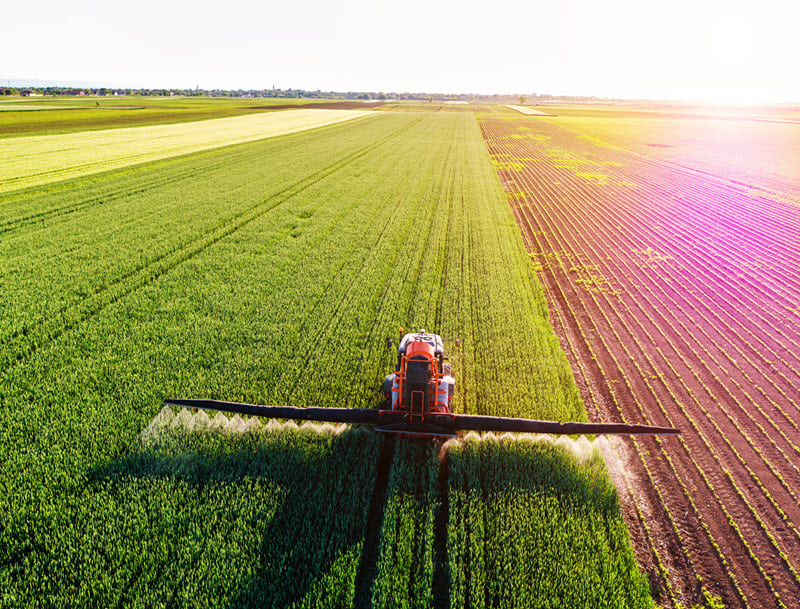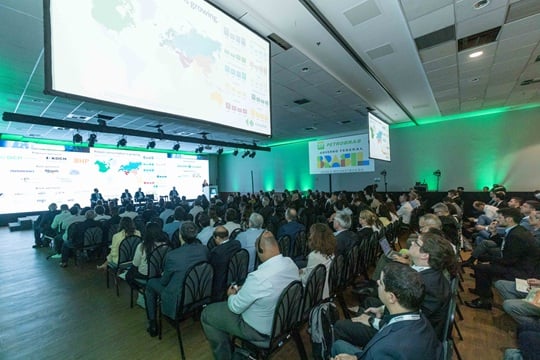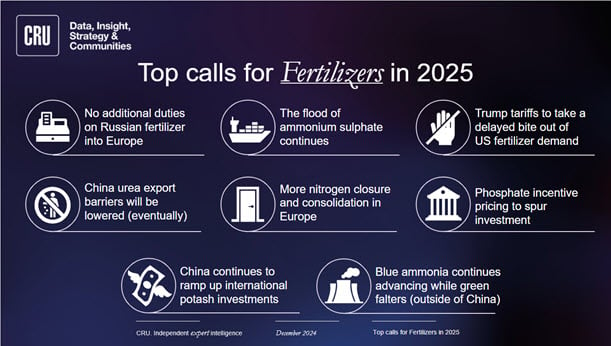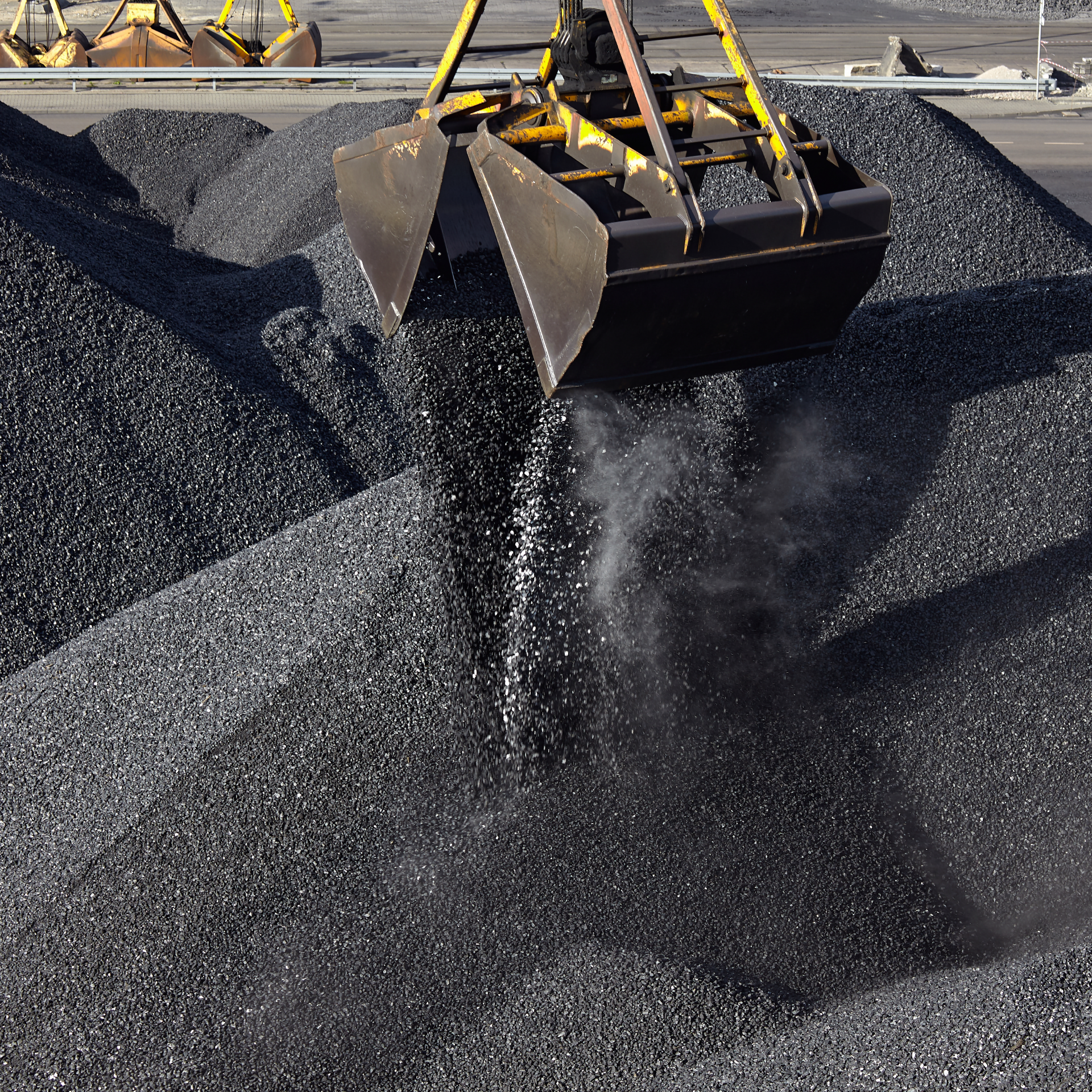At the end of 2019 the CRU fertilizer team published its Top 10 calls for 2020. As analysts, we follow industry best practices by reviewing and scrutinising all forecasts. In this instance, we have made the review public.
We were not bold enough to forecast a global pandemic – which would crash the stock market and disrupt life as we know it – but we assume not many forecasters had projected this. Despite the Covid-19 disruption to commodity supply chains, most of our forecasts are broadly on track. Each of the ten high-level ‘calls’ are reviewed below (rather than the specific numbers forecast). We have used the following symbols alongside our original forecasts to demonstrate performance so far.
China urea and phosphate exports are falling
China was the first country hit by Covid-19, and the epicentre of the virus was Hubei province, home to 32% of China’s phosphate capacity. DAP+MAP production in January to April was down 1.2 Mt (12%) y/y, a much smaller number than many had expected. Nevertheless, lower availability will lead to a reduction in DAP exports for 2020. Urea production was not hit as significantly by Covid-19. But with continued capacity consolidation and increasingly competitive product available from other exporters, total shipments from China are now projected at 4.2 Mt.
India urea imports to decline, but DAP to bounce
India’s Covid-19 containment measures have impacted domestic production of urea, DAP and NPK. But fertilizer demand has so far remained robust, shifting the market balance. Our estimate for urea imports for 2019 has been raised to 9.7 Mt, but we still anticipate a sharp decline in 2020 shipments, down 12% y/y to 8.5 Mt. However, DAP imports are now expected to reach a five year high of 6.4 Mt, supported by strong early sales, declining inventory levels and lower production.
China agrees potash contract later and lower
After a wait of more than 19 months, China’s importing consortium finally agreed a new potash contract on April 30. Settled at $220 /t CFR with Belarusian Potash Company (BPC), the new agreement marks a $70 /t decline on the previous contract and is only $1 /t higher than the decade-low 2016 contract. China was able to continue holding off in signing a contract, aided by high stocks, a release of strategic inventories and sliding spot market prices.
China soybean imports are up sharply
Our initial estimate for 2019 imports was off the mark, due to a surge of imports from the US in Q4 2019. Total 2019 imports ended at 92.6 Mt, up 6% from 2018 volumes despite simmering trade tensions with the US and the African Swine Fever wiping out a large portion of its pig herd. We now forecast Chinese soybean imports to reach 96.4 Mt in 2020. Trade figures show that imports are up 14% y/y to April, with very strong buying from Brazil.
Corn and soybean planted area bounces in the Americas
Corn planting in the US has rebounded sharply in 2020. However, there is speculation about how much corn has been planted. We maintain our view of 95-96 million acres, compared to the early USDA estimate of 97 million (to be updated at the end of June). CF Industries is at the lower of estimates, at 92-94 million. Brazilian soy plantings are projected to increase 2% y/y, owing to very strong farm margins.
US demand has rebounded – but some concerns over 2021
This was a relatively easy call to make - the probability of consecutive spring seasons being severely hampered by flooding was always low. Application conditions have been very good, and farmers were conscious of timely fertilizer application after the difficult 2019. However, there are some concerns about demand for 2021 crops given the trying economic conditions. Analysis within this special feature on the relationship between fertilizer demand and recessions addresses these concerns.
Sulphur prices find a floor early in 2020
Sulphur prices found their floor at just below $40 /t in January. Prices have since recovered but remain at historically low levels. The impact of low oil prices and reduced refinery activity has created some concern over future supply, but we are yet to see prices move sharply higher. This detailed insight covers the sulphur supply risks surrounding Covid-19 in further detail.
Freight rates crash on Covid-19
One of the most significant casualties of Covid-19 has been the bulk shipping market. Since the start of 2020, dry bulk freight rates on fertilizer trade routes monitored by CRU have declined by an average of 36%, owing to reduced shipping demand and low oil prices. Freight rates have started to firm over recent weeks, and a continued recovery is expected over H2.
Feedstock prices crash to new lows
Gas and coal prices have both declined in H1 2020, with European gas prices reaching just $1.00/MMBtu in May. Our annualised TTF forecast for 2020 is now $2.40/MMBtu, while the view on Henry Hub has been revised to $2.10/MMBtu. However, the oil price crash does represent some potential upside to gas prices. Coal prices have moved within our expectations and we expect some rebound from Q4 2020 on the back of higher Chinese industrial demand.
Dangote in early commissioning phase, but will hit market in 2021
Recent media reports suggest the Dangote urea project in Nigeria is currently in the commissioning phase and will be completed by the end of the year. This makes commercial output by Q1/Q2 2021 most likely, in line with our initial view. There is continued uncertainty over the readiness of port infrastructure and offtake agreements which makes exports unlikely until H2 2021.
The widespread impacts of Covid-19 have brought new uncertainty to commodity markets, although fertilizers are broadly on track to meet 2020 expectations. As outlined above, there are delayed risks to the next fertilizer year, which we continue to monitor and forecast as part of our regular market analysis.

















